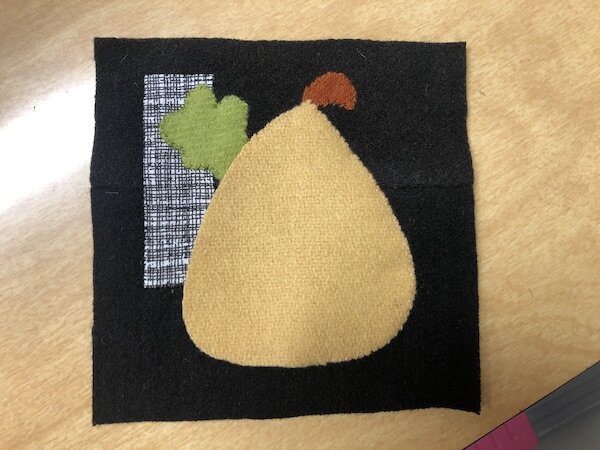Food as Medicine, Part 2
I am struggling a bit with writing these posts, because they include a fair bit of criticism of the health care industry. I have several good friends who are physicians. I know them to be kind, caring, competent people who share my frustrations about the limitations of treating people under the current system. I don’t hate doctors, but I have had some less-than-positive interactions with a few. Ultimately, I think it it boils down to a gross lack of understanding about nutrition.
I mentioned that my mother also has the MTHFR mutation, but her issues manifested a bit differently. (Genetics is a complicated topic.) She had a lot of trouble as a baby with what is known commonly as “failure to thrive.” The doctor tried her on breastmilk, cow’s milk, and even goat’s milk, and nothing helped. My aunt was two years older and had never had those kinds of issues. Eventually, my mother was able to start eating solid food and grew up normally.
She always appeared and felt anemic, however, to which the doctors’ standard answer was “Take more iron! Eat more liver!” My mother loves liver, partly because I think it made frequent appearances on their dinner table when she was growing up. However, as we found out later, my mother’s father, her next-youngest sibling, and one of my cousins all have hemochromatosis, which is a buildup of iron in the body and can be life-threatening. So here was a situation where one child looked like she was anemic from lack of iron and another one had too much.
The iron supplements never really helped my mother’s “anemia.” When the Cleveland Clinic began posting lab results online in patient accounts, my mother asked me to log in and take a look at the results from her regular checkups. I am not a doctor and don’t play one on TV, but as a medical transcriptionist for an oncology clinic and also a leukemia survivor, I am familiar with blood test results and what they say.
I noticed on one of her tests that her MCV—mean corpuscular volume—was elevated. The MCV is an indication of the size of the red blood cells. Hers were larger than normal. I looked at other lab tests and saw that the MCV was persistently elevated. Apparently, no doctor in 60+ years of looking at my mother’s blood tests ever thought to investigate that further.
I remembered the stories about her issues as a baby and put those together with the symptoms she had had all her life. I called her up and said, “I think you have pernicious anemia.” Remember what I said about my body craving high-folate foods? My mother’s diet tends to be heavier on red meats and other forms of food high in B12. Huh.
Pernicious anemia is the result of the body not being able to absorb vitamin B12. It’s also found in people with the MTHFR mutation. (I don’t think that we had had our genetic testing, yet, when I suspected that my mother had pernicious anemia.) The problem is that supplementing B12 orally does no good because the body lacks the ability to process and absorb it. I found a company that sold transdermal B12 patches and ordered a box and had them sent to her.
Some of her symptoms resolved. She went back to her doctor and explained what was going on. Her doctor tested B12 levels and then scoffed at the possibility that she could have pernicious anemia because the levels were normal. Normal blood levels do not necessarily indicate that the B12 is getting where it needs to be to do the job it needs to do, but as far as the doctor was concerned, my mother was fine. She still takes B12, although now I think she does a sublingual form because the patches are hard to find. Some people do monthly B12 shots.
I haven’t had issues with B12 absorption—or if I do, they are so mild as not to be noticeable—but I do take a B-complex every day. (I take one without any folate or folic acid in it.) The form of B12 that I take is hydroxocobalamin. The more commonly-available form is cyanocobalamin, which is produced in laboratories to be shelf-stable but is less effective.
***********************************************************
I’ve got my first Squash Squad block—the spaghetti squash—assembled and ready for embellishing.
I have some thoughts about this. Sue Spargo is a brilliant designer with a devoted following. She has built up a successful family business. However, if I were to do this wallhanging project with all of the threads and embellishments she specifies—and they are gorgeous—I think I could easily drop $500 in one fell swoop. That seems a bit excessive for a wallhanging. I am using what I have and only buying what I don’t. (I have to see if I can find #3 perle cotton somewhere in Kalispell—wish me luck.)
I ran jars #58-70 of tomato sauce through the canner before church yesterday morning. We will bring the last of the tomatoes over this afternoon to thaw overnight, and I’ll finish up sauce tomorrow.
We put a heater in the pigs’ water tank, but pigs like to investigate and play with anything new and interesting, and the heater is now MIA. The husband thinks it is buried in the pile of straw and one of the pigs is sleeping on it. It was 5 degrees when I woke up this morning. November 10 seems very far away right now.

